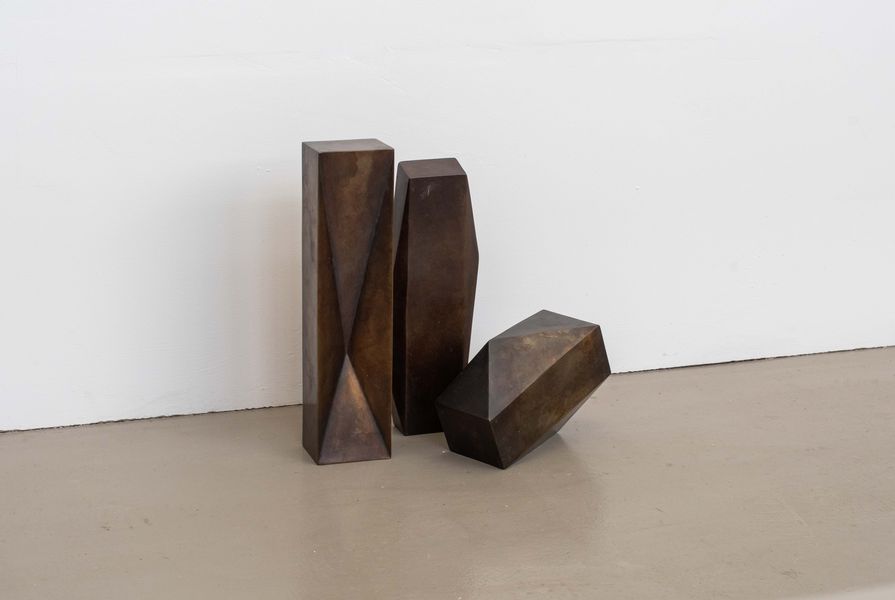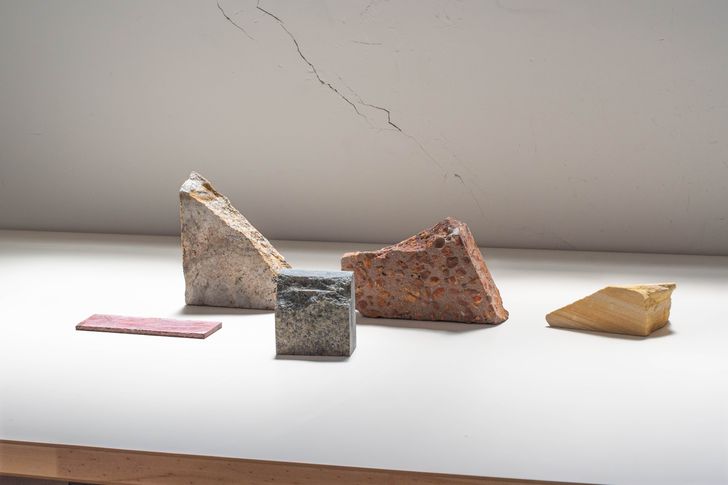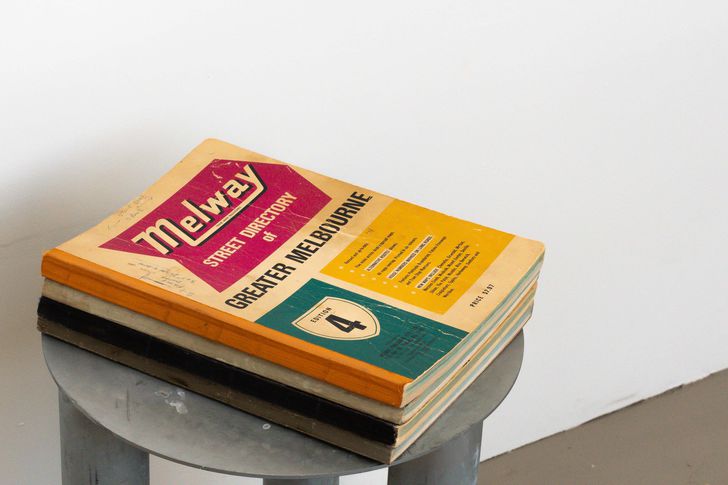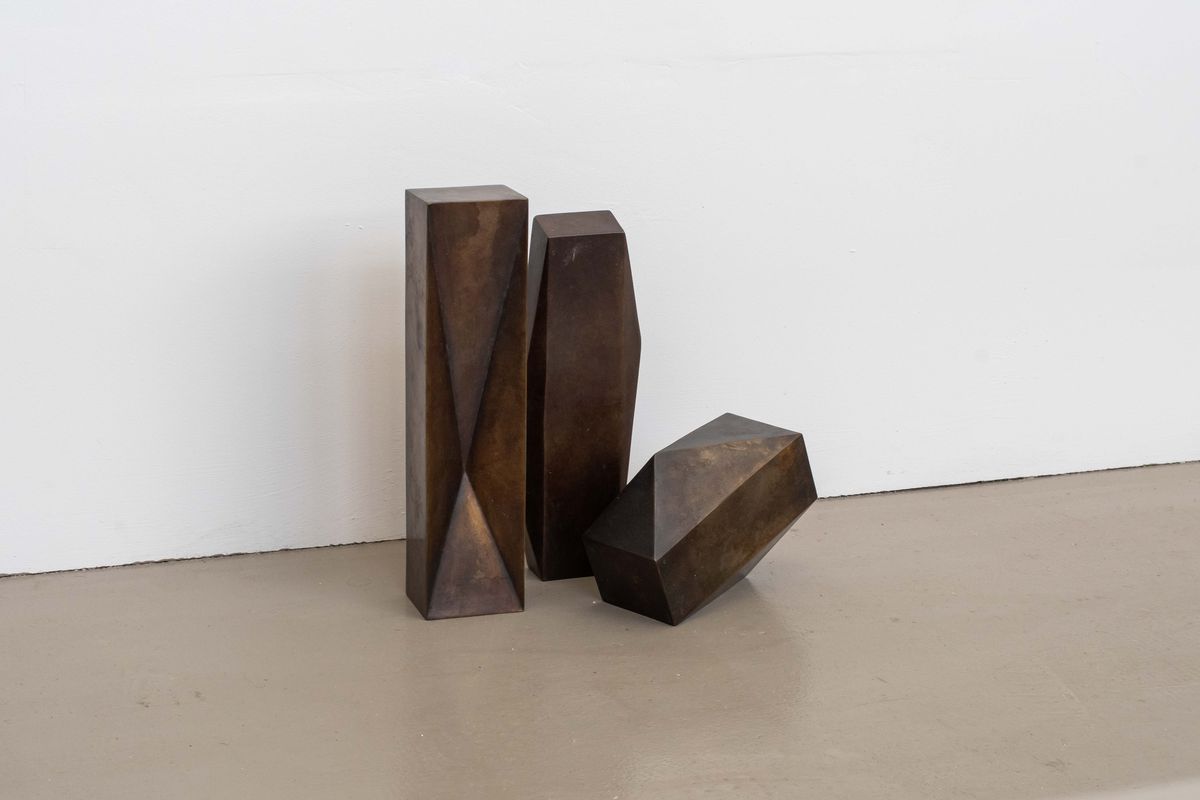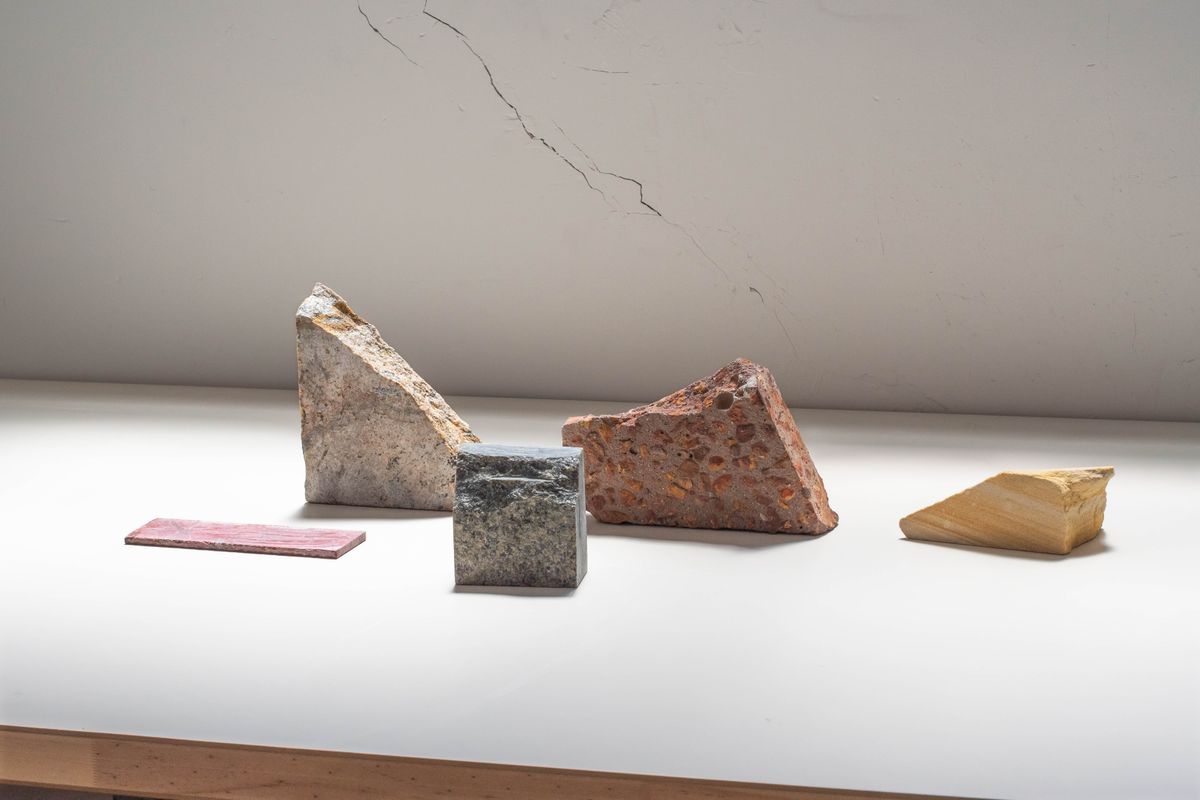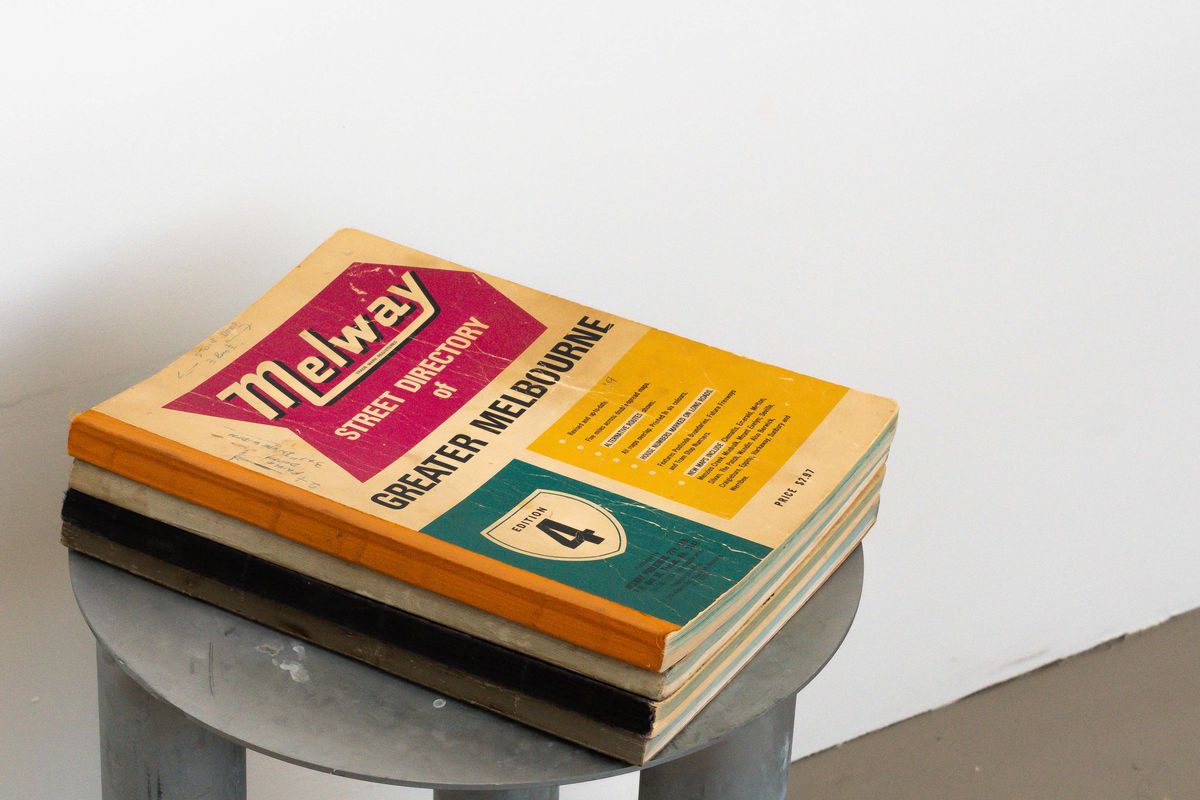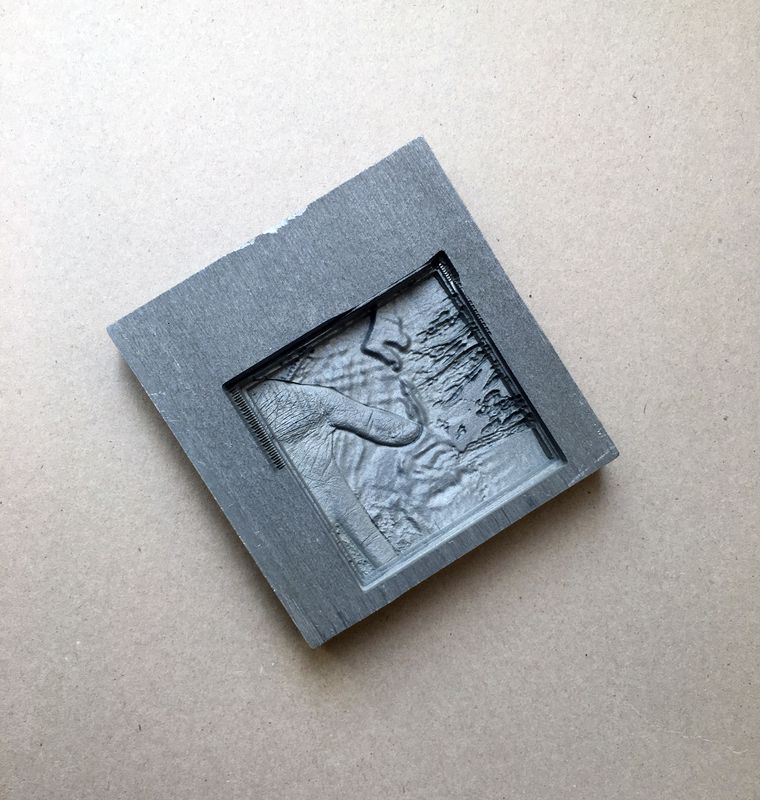Kirsten Bauer is a landscape architect based in Wurundjeri Country. As a director of global landscape architecture and environmental design practice Aspect Studios. she has led numerous award-winning public realm projects, including Yagan Square, Caulfield to Dandenong Level Crossing Removal Project and Prahran Square. She is a member of the inaugural Birrarung Council, a member of the Victorian Design Review Panel, Adjunct Professor of Landscape Architecture at RMIT University, and was Co-Creative Director of the 2019 International Festival of Landscape Architecture and Future Park Competition.
Sculpture by Jon Tarry
This one sculpture made up of three elements is by an artist friend. You can move the different sections around to create new forms and expressions: quite solid, just balancing, architectural, twisting, tenuous … I love its mass, its form and its unique spatial presence. The brass is tough, yet also intimate and tactile. The way people arrange the pieces could be thought to reflect who they are – a sort of sculptural personality test!
I send Jon, the artist, photos of my varying arrangements as a record of his changing art. The sculpture sits in great company with other small pieces by my favourite Australian artists. My design thinking is informed by the deep conversations these artworks have with one another.
Stones and rocks from sites across Australia
Image: Kate Meakin
Stones and rocks from sites across Australia
I often collect stone from the projects I work on during site inspections. They become mementos, but also add to my reference set of stone that might be used in future projects. I like the pieces best when they’ve been handled and are offcuts – imperfect, rather than the more polished samples from the supplier. And though in the absence of my taking, these hunks would simply go to landfill, nevertheless it feels like theft and I walk around cheekily in hi-vis, carting these heavy objects along with me. Design is material and form – it’s physical – and these slabs of rock carry their stories. You cannot collect the actual project, so this is the next best thing – miniature designs on our window shelf.
Melway street directory
Image: Kate Meakin
Melway street directory
I have always been fascinated with maps, and Melways are my greatest joy, they have been a part of my work process since the beginning. Arguably, the best map of Melbourne yet made, they tell a history of the city from 1966 onwards, illustrating the subtle characteristics of urban life, including pedestrian paths, old Telstra phone boxes, strange street names, future roads and suburbs, the loss of country, directions to parties and the exact location of our first kiss. Many people have given me Melways, over the years. I even have an “Even Greater Melbourne” edition. Each time I happen to be at the Melbourne Town Hall, I admire the incredible abstract paintings based on Melways that are displayed there.
Prototype for relief artwork
Image: Emily Wong
Prototype for relief artwork
This is a prototype of a relief work featured on the National Emergency Services Memorial in Canberra. The images on the relief were curated by Charles Anderson. This project was both my first major design competition – we won! – and the first project I led. My simmering ideas around typology, memorialization and landform along with everything that came from the amazing forcing house that was 1990s RMIT was distilled into a real project. We found the perfect location, created a 1:1 model on site with poles and string, and the horizon line was transformed into the memorial’s silhouette. It was an extraordinary experience that established career-long collaborations and, through our energy, naivety and passion, saw the memorial actually built.
This text is an excerpt from the catalogue for Subject/Object, an exhibition curated by AILA Cultivate that explored the intersection of everyday living and design practice. The exhibition took place from 17 March to 20 March at 514 Elizabeth Street, Melbourne as part of the 2022 Melbourne Design Week program.

